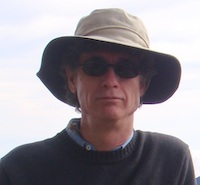You can believe anything you like, provided that you’re able to believe without strong evidence and without insisting on consistency with scientific truths. Indeed, faith or belief is necessary for many of us who are not well trained in scientific principles and must trust in the good intentions of others, for example, that the truck in the opposite lane was designed by good engineers and driven by a person who is happy, sane, and well rested.
Pseudoscience and conspiracy theories are not entirely something to scoff at, because they can teach us much about how human beings manage to cope with uncertainty, complexity, and misery. My purpose in writing about these beliefs is not to validate the claimed effects or to negate the ignorance and gullibility of the people who believe them, and certainly not to approve of fabrications intended to instill fear or hatred, but to celebrate the power of human imagination and hope.
There is no clear distinction between fascination and amusement; humorous and ironic intentions can be fallacious or unfounded. Nevertheless, I believe that many cultural fantasies were planted and nurtured with humorous intentions. We should also celebrate humor, even laughing at ourselves when we believe in wacky things. Otherwise, false narratives and deceptions without either a grain of truth or a grain of salt could overwhelm our public spaces.
I have not intended the subject for each chapter in this book to be exclusive, nor for the chapters to provide encyclopedic coverage of its subject. This is a book of poetry, so I hope we can tolerate a degree of deviation from objectivity. Most of the poems cover known instances of the subject; some describe instances that I have invented. In addition to the usual disclaimers, please add, “Opinions expressed here are not necessarily claimed by the author, who advocates careful use of an irony meter to mitigate any sense of certainty.”
In any page, you can click on or touch links to jump around in this book.
You may find the following keyboard equivalents to be convenient. Here I use the symbol ⌥ for the option key on Mac/OS or the alt key on Windows, ⇧ for the shift key, and ⏎ for the return (enter) key. Arrow keys are ◄ (left), ► (right), ▲ (up), and ▼ (down).
| Context | Keys | Jump to / Behavior |
|---|---|---|
| cover | ⌥ ◄ | Books by Tom Sharp |
| ⌥ ▲ | About Tom Sharp | |
| ⌥ ► | about this book (this page) | |
| ⌥ ▼ | contents | |
| ⇧ ⌥ ▼ | contents | |
| contents | ⇧ ⌥ ▲ | cover |
| ⌥ ▼ | select the next item in the contents | |
| ⌥ ▲ | select the previous item in the contents | |
| ⌥ ► | open the selected page | |
| ⌥ ⏎ | open the selected page | |
| poem | ⇧ ⌥ ▲ | contents |
| ⌥ ◄ | contents | |
| ⌥ ▲ | select the previous poem, or, from the top poem, open the previous page | |
| ⌥ ▼ | select the next poem, or, from the bottom poem, open the next page |

Tom Sharp is a Native American of Aleut heritage, a member of Seldovia Village Tribe. He is the author of numerous books, including Spectacles: A Sampler of Poems and Prose, Taurean Horn Press (ISBN 0-931552-10-9), a novel, Hans and the Clock (ISBN 979-8580172484), The book of science, SciFi (ISBN 979-8694935210), Things People Do (ISBN 979-8687425568), The I Ching (ISBN 979-8573510620), Images (ISBN 979-8577560515), Aleut Artifacts (ISBN 979-8575608998), Aleut Words (ISBN 979-8582103394), and First Nations (ISBN 979-8682924769).
